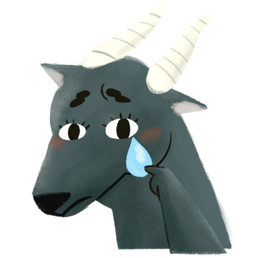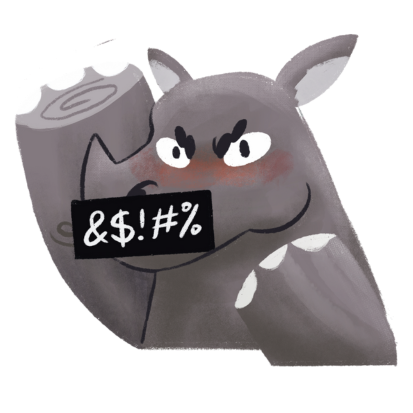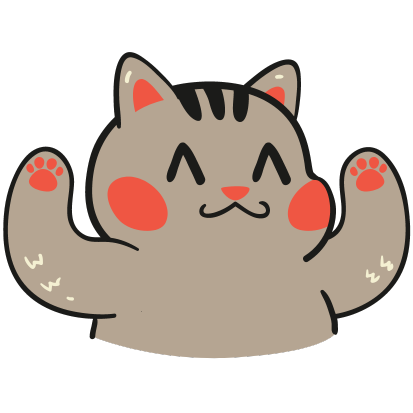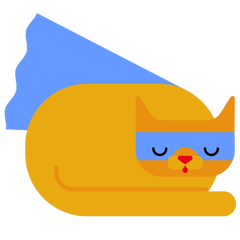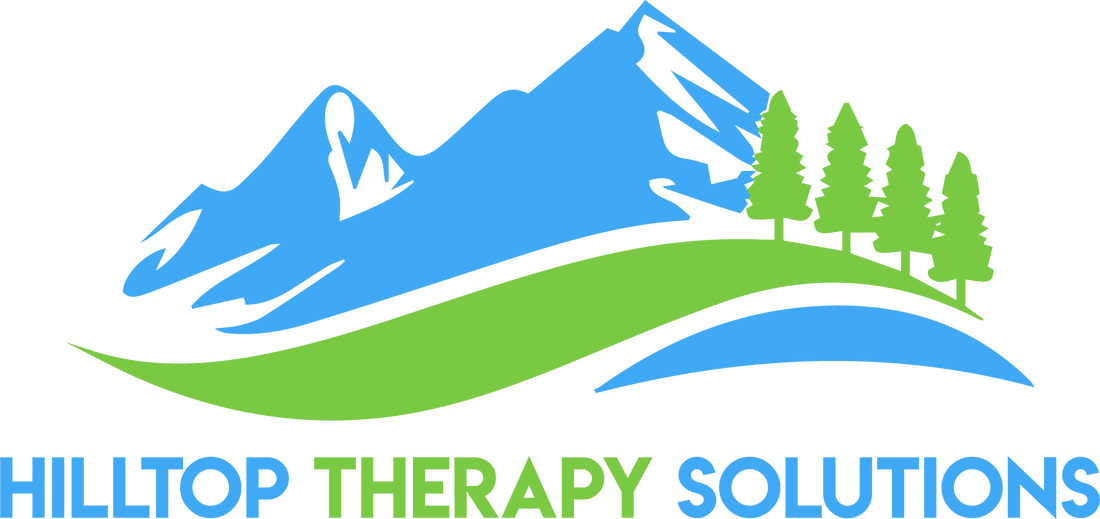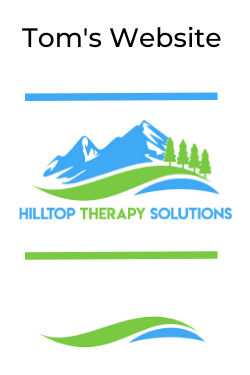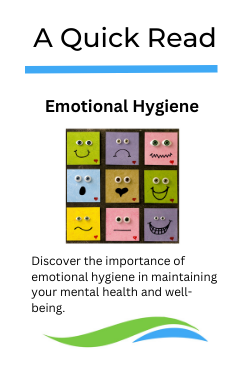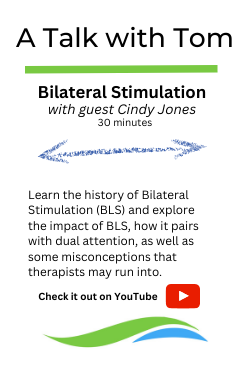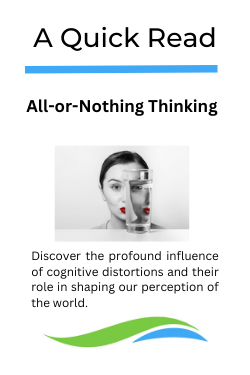|
"Awareness" can guide our decisions and practice of self-care.
In this challenging world we find ourselves in, we can wield the power of "Awareness" to guide our decisions and practice self-care. We can develop the ability to recognize if we're moving in a direction we don't want to go. We can use our body, thoughts, feelings, actions, and what's going on around us as data to guide our decisions.
Different things can prompt awareness for different people. Being aware helps us prevent getting too caught up in negative emotions. Awareness only works if you want to focus on your reality more than your emotions. Awareness empowers us to break free from doing things automatically. Now, let's look at some simple types of Awareness Cues.
Putting Awareness of Physical Cues into action means recognizing the physical cues and mentally acknowledging them. For instance, imagine you're stuck in bumper-to-bumper traffic, and you notice yourself tightening your grip on the wheel and clenching your jaw. These are Awareness Cues that can prompt you to acknowledge, "I am clenching my jaw and fists. I need to chill and breathe." or "I feel my heart beating out of my chest; I need to calm down ASAP."
Your Thinking
Our thinking style can create patterns that we can become aware of with practice. By paying attention to our thoughts, we can spot negative thinking, cognitive distortions, and E/T (Emotion over Thought) thinking patterns. Examples of Thought Cues: When caught up in emotional or real-life challenges, we may view everything from a negative perspective, constantly ruminating on distressing thoughts, or treating our expectations as if they were reality. Expectations often manifest as predicting the future or using "should" statements, such as "I should be stronger," "They should care more," or "Life should be fair." Recognizing cognitive distortions can be very helpful in this area. I encourage everyone to keep a list of cognitive distortions in their coping skill toolbox. "I'm depressed," "I’m anxious," "I’m triggered," or "I’m feeling an unwanted emotional state." Statements like these can also serve as Thought Cues! When we start identifying ourselves solely with our emotions or emotional states, it's a significant cue that we might be falling into an unhelpful pattern.
A principle that I share with everyone I work with is that "Emotions over Thoughts lead to Bad Decisions." When you encounter challenging situations and feel tempted by unhelpful choices, remind yourself that prioritizing emotional decisions, especially when distressed, often leads to bad decisions
Most people do not want to make bad decisions. Learning what your emotions, body, and thoughts do when you are emotional is a core part of Awareness!
Your Emotions
Being in tune with when we feel "Not Okay" can be a powerful Awareness Cue. There's a distinct change that happens when we start to recognize the difference in our Thoughts over Emotions (T/E) and Emotions over Thoughts (E/T) experiences.
Labeling the specific emotion isn't as crucial as recognizing that we are at risk of falling into E/T patterns, which tend to lead to decisions that we wouldn’t make if we were in a healthier state of mind. Once we are focused on making healthier decisions, then we can start working to label the specific emotion.
Your Behaviors
Being aware of engaging in or having a desire to engage in unhelpful behaviors or negative coping can be powerful Awareness Cues. These cues vary from person to person, as everyone is different. However, recognizing our negative coping or behavioral patterns can be a significant awareness cue. Examples of Behavioral Cues: Behavioral Cues can include a desire to engage in unhealthy coping, such as neglecting our physical well-being or life tasks, turning to alcohol or substances when feeling overwhelmed by emotions or E/T, engaging in proactive arguing, avoiding friends, or resorting to yelling. Putting Awareness of Behavioral Cues into action may involve noticing a desire to engage in something unhelpful and stopping ourselves. For example, saying to ourselves, "I really want to throw an insult... that’s a cue that I need to step away."
Ultimately, we are accountable for our behavior, but we should avoid shaming and guilting ourselves over missteps. Instead, we need to build a foundation to learn from our experiences. I encourage everyone to reflect on how they learn about themselves and their emotional experiences.
Social Cues in action are varied and complex, just like humans! For instance, we could become aware that a spouse or loved one comes home frustrated or annoyed from work. This prompts Awareness of our internal emotional and physical reaction to the situation. It’s like dominoes, we can use one Awareness Cue to help us become aware of other Awareness Cues! In this hypothetical situation, these Awareness Cues can lead to a mental directive, "Oh wow, they are in a bad mood from work. I need to be aware of how this affects me so I can then give them some love."
By tending to ourselves (and sometimes this is a lot of work at first), we can then learn to tend to those we care about (or double down on our self-care, depending on your situation). Recognizing our emotions and reactions not only helps us make better decisions for ourselves but also enables us to respond to the emotional needs of others with empathy and understanding. It fosters healthier interactions and strengthens our relationships. Social Awareness Cues can serve as the building blocks for cultivating more meaningful connections with those around us. We only have control over ourselves. Once we notice social signals, we should focus on our own behavior, such as slowing down, walking away, or increasing our general awareness of the situation, so we don't react or engage in an unhelpful way. Final Part: Cultivating Awareness
Almost anything can serve as an Awareness Cue, prompting us to check in with our emotions! Whether it's cues from our interactions, environment, routines, or emotional and behavioral patterns, each presents an opportunity for self-reflection and growth. These Awareness Cues act as "fire alarms," indicating when we might be falling into E/T patterns or at risk of making decisions that don't align with our best interests (E/T Decisions!). As you delve into the concept of Awareness, make it personal to your unique experiences and natural tendencies.
Remember, our emotional journeys are not about achieving perfection, but rather about developing awareness of the "fire alarm" signals that our body, mind, and experiences provide.
Seeking help with Awareness is nothing to be ashamed of; in fact, it can be incredibly beneficial. Impactful and effective therapy is a valuable resource, and we know that therapy works! Through a mindful and compassionate approach to self-awareness, we empower ourselves to navigate life's challenges with greater clarity and emotional well-being. Embracing Awareness as a superpower equips us with the tools to lead more balanced, fulfilling lives. |
|
About the Author Tom Hill is a Licensed Professional Counselor in Colorado, specializing in the treatment and resolution of trauma and attachment wounding. With almost 20 years of experience in the mental health field, Tom understands the profound impact negative experiences can have on a person's thoughts, emotions, and body. He firmly believes that trauma is treatable and that everyone has the potential to heal and grow. |




